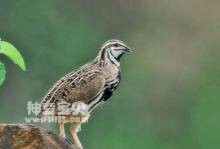
The black-breasted Quail is known as Coturnix coromandelica or Rain Quail and is found in pairs rather than groups. It is often active in the plains, wastelands, streams and hillsides where dense weeds or undergrowth grow, and sometimes near arable land. Mainly eat weed seeds, beans, grains and berr...
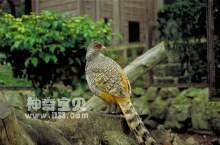
The painted Pheasant (Catreus wallichii), the foreign name Cheer Pheasant, like most pheasant birds, does not have a bright rich color.Most pheasants use their powerful beaks to dig the ground for food, including plant roots, tubers or bulbs, seeds, grubs, beetles, snails, insect larvae and worms, a...
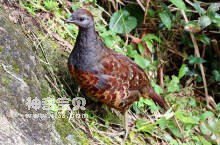
Chinese Bamboo Partridge (scientific name: Bambusicola thoracica) has 2 subspecies.Grouse usually move in groups, consisting of a few to more than 20, with larger groups in winter and scattered activities during the breeding season. Each group has a fixed activity area, the feeding ground and habita...

Mountain Bambusicola fytchii is a small chicken similar in size to Mountain Bambusicola Fytchii.Bamboo chickens usually live in small groups, consisting of a few to more than 20 individuals, with large groups in winter and scattered activities during the breeding season. Each group has a fixed activ...

Tragopan (Argusianus argus) is known as the Great Argus and has two subspecies.The pheasant roosts in trees at night and rummags for food on the woodland floor during the day, spending most of its time alone, except during breeding when the females gather to watch the males display in the courtship...
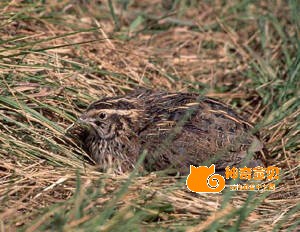
Snow partrail is known as Anurophasis monorthonyx and Snow Mountain Quail.Listed on the International Union for Conservation of Nature (IUCN) 2016 Red List of Threatened Species ver 3.1 - Near Threatened (NT).Protect wild animals and eliminate wild meat.Maintaining ecological balance is everyone'...
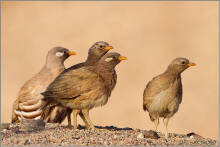
Ammoperdix heyi, also known as Sand Partridge, has four subspecies.The partridge is stout, smaller than the pheasant, fast at running and hiding, rarely flying, and soon tired of flying. Found in deserts and rocky slopes. The song of the partridge has an elegant texture and often echoes in its rocky...
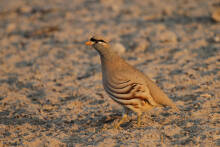
Ammoperdix griseogularis and See-see Partridge. Usually living in pairs, seeds make up 80% of the bird's diet in summer, with other foods including greens, berries and insects. Considered monogamous, females usually breed in April, laying 5-7 eggs per litter, with nests embedded or hanging from...

Red-legged Partridge (Alectoris rufa) has three subspecies.Red-legged cockerels are active during the day, in the early morning and evening, and usually rest at their perch at noon. Sex likes to swarm, and small flocks of up to 20 birds are often seen wandering fields and pastures. Sometimes during...
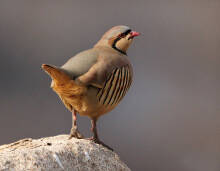
The scientific name of the black-faced grouper is Alectoris philbyi, and the foreign name is Philby's Partridge. Action is very alert and careful, often run along the hillside or up the mountain in case of danger, never run down the mountain, running speed is extremely fast, but also good at hid...
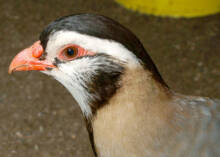
Arabian chicken scientific name Alectoris melanocephala, foreign name Arabian Partridge, sex like cluster. Action is very alert and careful, often run along the hillside or up the mountain in case of danger, never run down the mountain, running speed is extremely fast, but also good at hiding. Also...
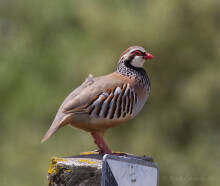
European grouper (scientific name: Alectoris graeca), foreign name Rock Partridge, pheasant family Grouper genus of medium chickens, there are 4 subspecies.The European grouper likes to flock. Action is very alert and careful, often run along the hillside or up the mountain in case of danger, never...
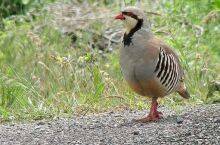
Alectoris chukar (Chuckar, Chukar, Chukar Partridge) is a medium-sized pheasant with 14 subspecies.Grouper is a resident bird. Active during the day, the sex likes to cluster, sometimes during the day to the farmland near the hillside to forage, after the shock straight to the mountain quickly run....
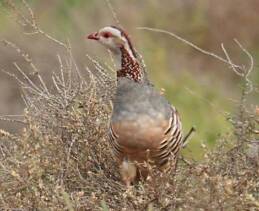
North African rock chicken scientific name Alectoris barbara, foreign name Barbary Partridge, sex like cluster. Action is very alert and careful, often run along the hillside or up the mountain in case of danger, never run down the mountain, running speed is extremely fast, but also good at hiding....
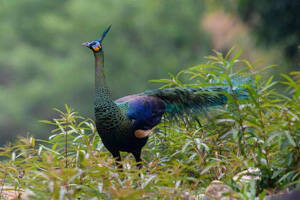
Congo Peacock (Afropavo congensis) : Congo peafowl, Congo Peacock, no subspecies. Congolese peacocks defy the general rules of the bird world, with females being more beautiful than males.Congo peacock is an elusive mysterious bird, because living in Africa's dark, human and animal rare rainfore...
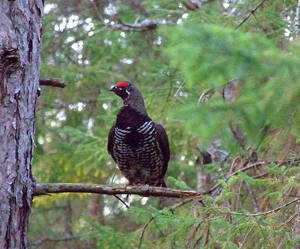
The Fir-tree chicken (Dendragapus canadensis), also known as Spruce Grouse, has six subspecies.Fir-tree chicken activity peaks in the early morning and late evening, pecking at grass. In the summer, this solitary activity on the ground, in the winter may gather in small groups of up to 30 individual...

Ortalis wagleri, Rufous bellied Chachalaca, eats banana fruits, coffee berries and leaves, and occasionally pecks at insects.International Union for Conservation of Nature (IUCN) Red List Protection Level: No Threat (LC).Protect wild animals and eliminate wild meat.Maintaining ecological balance is...

The Plain Chachalaca, Ortalis vetula, eats banana fruits, coffee berries, and leaves, and occasionally pecks at insects.Listed on the International Union for Conservation of Nature Red List of Threatened Species (IUCN) for 2020 ver 3.1 - Not Threatened (LC).Listed in Appendices I, II and III of the...
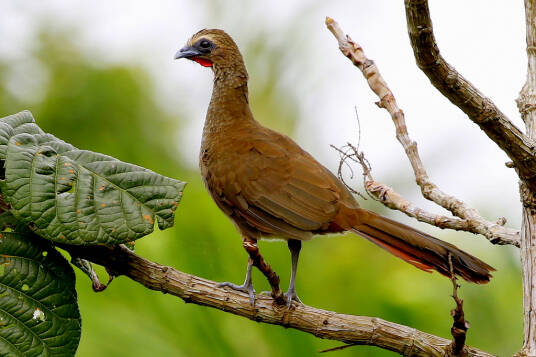
Ortalis superciliaris, or Buff-browed Chachalaca, feeds mainly on banana fruits, coffee berries, and leaves, and occasionally pecks at insects.International Union for Conservation of Nature (IUCN) Red List Protection Level: No Threat (LC).Protect wild animals and eliminate wild meat.Maintaining ecol...